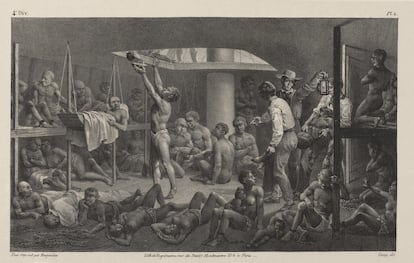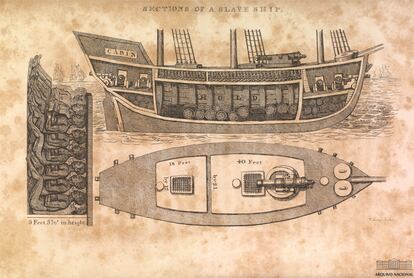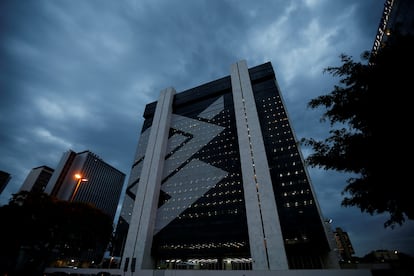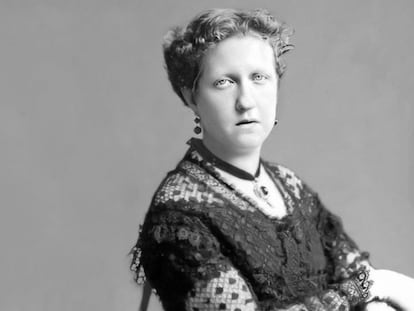Was the Bank of Brazil complicit in the slave trade?
The country’s Public Prosecutor’s Office is investigating the responsibility of the entity – which was founded in 1808 – in the sale and purchase of African people


The slave trade to Brazil and the rest of the Americas was a business as inhuman as it was gigantic and extremely lucrative. It involved investors and insurers, as well as ship captains who did the perverse accounting.
In 1762 — after docking with the human cargo in Rio de Janeiro — one of these captains calculated the income from the sale of the group of Africans who had been captured and brought overseas by force. He deducted the value of the captives killed during the voyage, while, in the expenses column, he included maritime transportation, his salary, the payment to the priest who baptized five captives and “the feeding of the slaves for 76 days, at [a cost of] 60 reales a day and the sales commission, 6%.” This was all reported in Escravidão (Slavery) — an award-winning trilogy by Brazilian journalist Laurentino Gomes about that horrific period.
The slave trade became one of the pillars of the Brazilian economy. A century-and-a-half after abolition, the Brazilian Public Prosecutor’s Office has just opened a case to investigate the responsibility of the Bank of Brazil (BB) in the sale and purchase of human beings.
As the fourth-largest savings entity in Brazil, BB is one of the best-known brands in the country. It’s omnipresent: the government owns 70% of the shares, it has 75 million clients (a third of the population) and it has branches in almost every corner of the country. Meanwhile, more than half of the 215 million Brazilians are descendants of the five million human beings who were kidnapped in Africa and transported in chains to the other side of the Atlantic aboard slave ships. In the United States, by comparison, about 13% of Americans have ancestry stemming from enslaved Africans.
The initiative to analyze this chapter in the bank’s history came from a group of historians. Scholars have been examining the phenomenon of slavery within this financial entity, which was founded in 1808, the year after the Portuguese royal court retreated from Lisbon to the Portuguese colony of Brazil, as a result of the French invasion.
Many of those who first contributed funds to create the BB were slave-traffickers who — in exchange for their financial support — received noble titles. It was especially after 1830 — when Brazil, under pressure from England, prohibited the sale and purchase of Africans — that the business became more lucrative and increased its size exponentially, with the consent of the Portuguese empire.

The Public Prosecutor’s Office — which, in Brazil, also exercises the functions of ombudsman, with the mission of ensuring human rights, preserving memory and combating racism — immediately picked up the gauntlet. After analyzing the historians’ request at the end of September, it opened an investigation — a step that was widely-publicized — and summoned the leadership of the Bank of Brazil to a meeting. The ministers of Racial Equality and Human Rights — serving in the government of President Luiz Inácio Lula da Silva — and the historian were also invited. The Bank of Brazil quickly made itself available to investigators to “accelerate the process of reparations.”
One of the historians is Thiago Campos, a researcher at the Oral History Laboratory of the Fluminense Federal University in the state of Rio de Janeiro. He explains to EL PAÍS on the phone that “any Brazilian institution of the 19th century was directly or indirectly related to human-trafficking or slavery.” He adds that the bank was chosen because it’s one of the few institutions born at that time that still exists… although it has undergone several refoundations throughout the past two centuries. “This is a debate that already exists in other countries. We’re very far behind,” he points out, before adding that, in Brazil, “the chapter of slavery was normalized, without questioning — during all this time — that the bank that bears the name of our nation was founded on slavery.”
The historian details that, in 1853, the main private shareholder of the Bank of Brazil was one of the largest traffickers of Africans: José Bernardino de Sá. This slave trader forcibly brought “more than 20,000 people [to Brazilian ports] in more than 50 trips.” These were times when a single voyage could translate into a fortune… as long as the majority of the human cargo survived the journey.
To save money, traffickers limited the slaves’ food rations during the sea voyage and increased it in the final days. They also covered the bodies of Africans with oil. All with the aim that, upon docking, those men and women would appear stronger, look better and be sold at a higher price, according to what is documented in the Escravidão trilogy. The magnate De Sá became one of the richest men in the empire, owning several estates.

Julio Araujo — one of the members of the Public Prosecutor’s Office who signed the decision to open this investigation — explains that the principal objective is to open the discussion. “This is a very important, crucial issue that has to enter the public agenda, the public debate,” he says over the phone.
After contact was made between the BB, the public authorities and the historians, the researchers’ objectives are now to broaden the focus of their investigation and include Black activist movements and the rest of Brazilian society. Araujo emphasizes that the end of this process hasn’t been written: “We don’t know if the bank is going to recognize violations, if it’s going to ask for forgiveness, if it’s going to deepen the investigation into its history. The priority now is to put the issue on the agenda.”
The historian Campos has been pleasantly surprised by the speed and disposition with which the financial entity responded to the opening of the case. “The Bank of Brazil has the capacity to recount its history, to investigate its archives and thus participate in the reconstruction of that past that has been erased from our history.”
Sign up for our weekly newsletter to get more English-language news coverage from EL PAÍS USA Edition
Tu suscripción se está usando en otro dispositivo
¿Quieres añadir otro usuario a tu suscripción?
Si continúas leyendo en este dispositivo, no se podrá leer en el otro.
FlechaTu suscripción se está usando en otro dispositivo y solo puedes acceder a EL PAÍS desde un dispositivo a la vez.
Si quieres compartir tu cuenta, cambia tu suscripción a la modalidad Premium, así podrás añadir otro usuario. Cada uno accederá con su propia cuenta de email, lo que os permitirá personalizar vuestra experiencia en EL PAÍS.
¿Tienes una suscripción de empresa? Accede aquí para contratar más cuentas.
En el caso de no saber quién está usando tu cuenta, te recomendamos cambiar tu contraseña aquí.
Si decides continuar compartiendo tu cuenta, este mensaje se mostrará en tu dispositivo y en el de la otra persona que está usando tu cuenta de forma indefinida, afectando a tu experiencia de lectura. Puedes consultar aquí los términos y condiciones de la suscripción digital.
More information
Últimas noticias
Most viewed
- Sinaloa Cartel war is taking its toll on Los Chapitos
- Oona Chaplin: ‘I told James Cameron that I was living in a treehouse and starting a permaculture project with a friend’
- Reinhard Genzel, Nobel laureate in physics: ‘One-minute videos will never give you the truth’
- Why the price of coffee has skyrocketed: from Brazilian plantations to specialty coffee houses
- Silver prices are going crazy: This is what’s fueling the rally










































